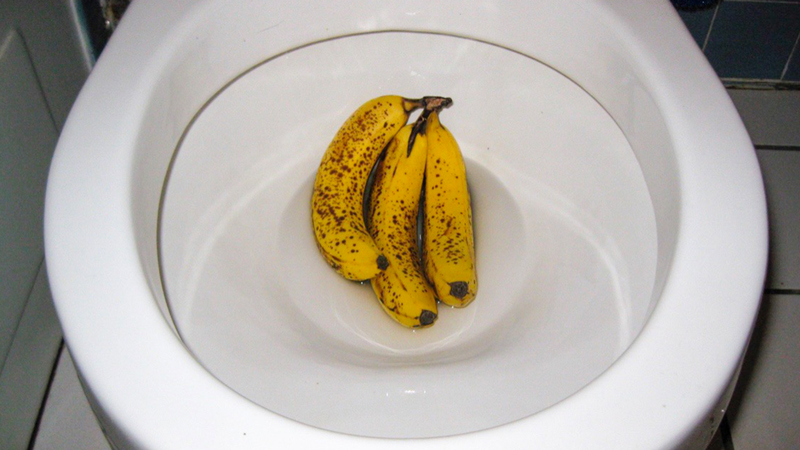Are you searching for advise involving What Can Happen If You Flush Food Down the Toilet??

Introduction
Many individuals are often confronted with the problem of what to do with food waste, especially when it involves leftovers or scraps. One common inquiry that occurs is whether it's okay to purge food down the bathroom. In this short article, we'll explore the reasons why people may take into consideration flushing food, the consequences of doing so, and alternative techniques for proper disposal.
Reasons why people may think about purging food
Absence of recognition
Some individuals may not know the potential damage caused by purging food down the toilet. They might incorrectly think that it's a harmless practice.
Ease
Purging food down the commode might feel like a fast and easy option to disposing of undesirable scraps, especially when there's no close-by garbage can offered.
Laziness
In some cases, people may simply choose to flush food out of sheer negligence, without considering the effects of their activities.
Consequences of flushing food down the commode
Ecological impact
Food waste that ends up in waterways can add to contamination and injury water communities. In addition, the water made use of to purge food can strain water resources.
Plumbing concerns
Flushing food can lead to clogged up pipelines and drains pipes, causing pricey plumbing repairs and aggravations.
Sorts of food that ought to not be flushed
Fibrous foods
Foods with coarse structures such as celery or corn husks can get entangled in pipes and cause obstructions.
Starchy foods
Starchy foods like pasta and rice can soak up water and swell, causing clogs in pipes.
Oils and fats
Greasy foods like bacon or food preparation oils should never be flushed down the commode as they can solidify and create clogs.
Correct disposal techniques for food waste
Making use of a garbage disposal
For homes equipped with waste disposal unit, food scraps can be ground up and purged through the pipes system. Nonetheless, not all foods are suitable for disposal in this way.
Recycling
Particular food packaging materials can be reused, lowering waste and reducing environmental impact.
Composting
Composting is an eco-friendly means to dispose of food waste. Organic products can be composted and utilized to enrich soil for horticulture.
The significance of appropriate waste monitoring
Decreasing environmental damage
Appropriate waste management practices, such as composting and recycling, help lessen air pollution and maintain natural deposits for future generations.
Protecting plumbing systems
By avoiding the practice of flushing food down the commode, homeowners can protect against pricey plumbing fixings and maintain the integrity of their pipes systems.
Conclusion
In conclusion, while it may be alluring to purge food down the bathroom for ease, it is very important to comprehend the potential effects of this action. By taking on correct waste administration methods and dealing with food waste responsibly, individuals can add to healthier plumbing systems and a cleaner atmosphere for all.
FLUSH FOOD DOWN THE TOILET?
FLUSHING FOOD CAN CAUSE BLOCKED DRAINS IN YOUR HOME
All of the plumbing fixtures in your home are connected to the same sewer pipe outside of your home. This outdoor sewer pipe is responsible for transporting all the wastewater from your home to the Council sewer mains. Even small pieces of food that go down the kitchen sink can cause problems for your sewer. It should therefore be obvious that flushing larger bits of food, such as meat, risks a clog in either the toilet itself or the sewer pipes. Flushing greasy food is even more problematic because oil coagulates when it cools, coating the interior lining of your pipes.
THE TOILET IS NOT A BIN
Food isn’t the only thing that people shouldn’t be flushing down the toilet. People use the toilet to dispose of all kinds of things such as tampons, makeup wipes, dental floss, kitty litter and even underwear. Water goes to great lengths to educate residents about the high costs and stress placed on wastewater treatment systems simply from people flushing the wrong stuff down the toilet. It costs taxpayers millions of dollars each year, and homeowners thousands in blocked drain repairs.
FLUSHING FOOD IS A WASTE OF WATER
Flushing food is a waste of our most precious resource - water. In June this year Level 1 water restrictions were introduced to protect water supply from drought conditions. Much of New South Wales continues to be affected by prolonged drought with recent figures revealing up to 97 per cent of the state remains in drought. Depending on whether you have a single or dual flush toilet, every single flush uses between five and 11 litres of water. In the current climate this is a huge amount of water to be wasting on flushing food that should be placed in the bin (or better yet, the compost).
https://www.jabplumbingsolutions.com.au/blog/can-you-flush-food-down-the-toilet

Hopefully you liked our section on Think Twice Before Flushing Food Down Your Toilet. Thank you for taking the time to read through our blog. Feel free to take the opportunity to distribute this content if you appreciated it. Thanks for your time. Kindly check our blog back soon.
Information Here